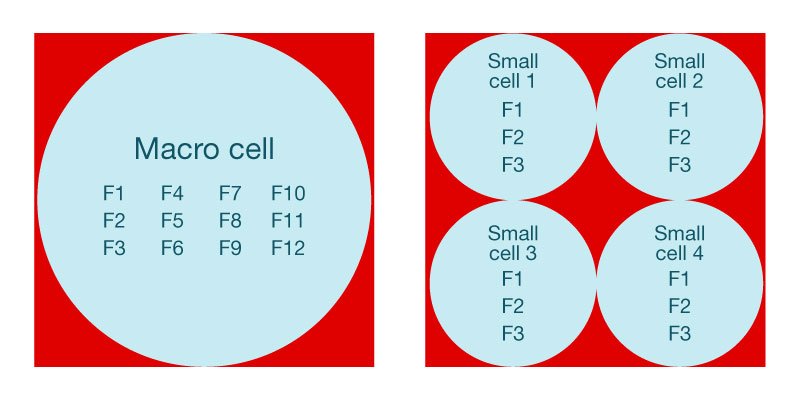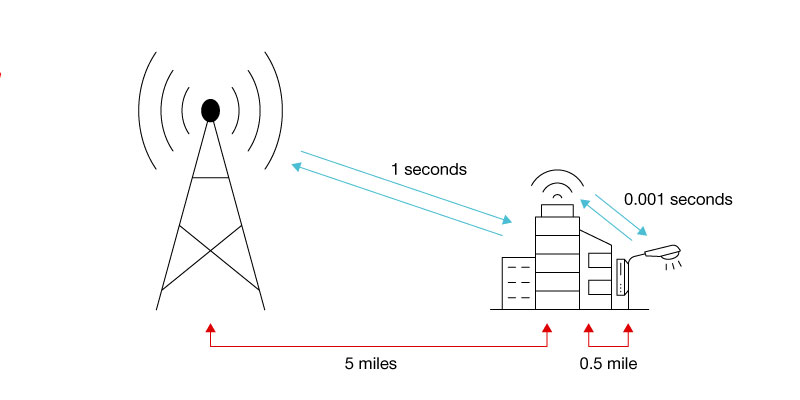SSZT302 may 2020 LM5164 , TPS543B20 , TPS546A24A , TPS546B24A , TPS546C23 , TPS546D24 , TPS546D24A , TPSM846C23
We’ve all experienced the inconvenience of a dead spot. Macro remote radio units (RRUs), also known as macro cells, are typically deployed in a centralized location to cover dense urban areas. As the number of people using RRUs grows beyond capacity, the system’s signal overloads and weakens. To increase the capacity of the network in high usage areas, manufacturers have turned to small cells to supplement existing RRUs.
Here are three main advantages of using small cells:
- They can support many
users. Small cells take full advantage of the available licensed and
unlicensed spectrum and use it more effectively than macro cells. By limiting
the number of people using one base station in an area, small cells open up the
same frequencies to other users in other areas. Figure 1 exemplifies how a macro cell requires a larger variety of
frequencies to service an area. Small cells can reuse the same frequencies
because they are servicing different, smaller areas.
 Figure 1 Macro-cell frequency
allocation vs. small-cell frequency allocation
Figure 1 Macro-cell frequency
allocation vs. small-cell frequency allocation - No more lost signals. While 4G was focused on frequencies below 6 GHz, 5G is moving beyond 6 GHz to 30 GHz, all the way to 300 GHz. However, the drawback of higher frequencies is higher attenuation, which reduces the distance that a signal can travel and prevents signals from penetrating walls or other obstacles. Small cells take advantage of the wider spectrum; since they are compact, they are a good choice for installing in urban areas and can be placed closer to users in order to prevent lost signals.
- Faster data transfer. Since small cells can be placed closer to users, there is less distance for the signal to travel, resulting in faster data transfer and decreased latency. Figure 2 illustrates how the distance between the small cell and the user can affect signal transmission and receiving speeds. With lower latency, downloading, streaming, texting and internet searching can all happen in a fraction of the time that it takes now.
 Figure 2 Example time and distance for
a signal to travel to a macro cell vs. a small cell
Figure 2 Example time and distance for
a signal to travel to a macro cell vs. a small cellThese are only three of the many benefits of using small cells for 5G deployments. Check out the white paper, “Small Cells, Big Impact: Designing Power Solutions for 5G Applications” for more in-depth information on small cells and what to consider when designing a small-cell power stage.